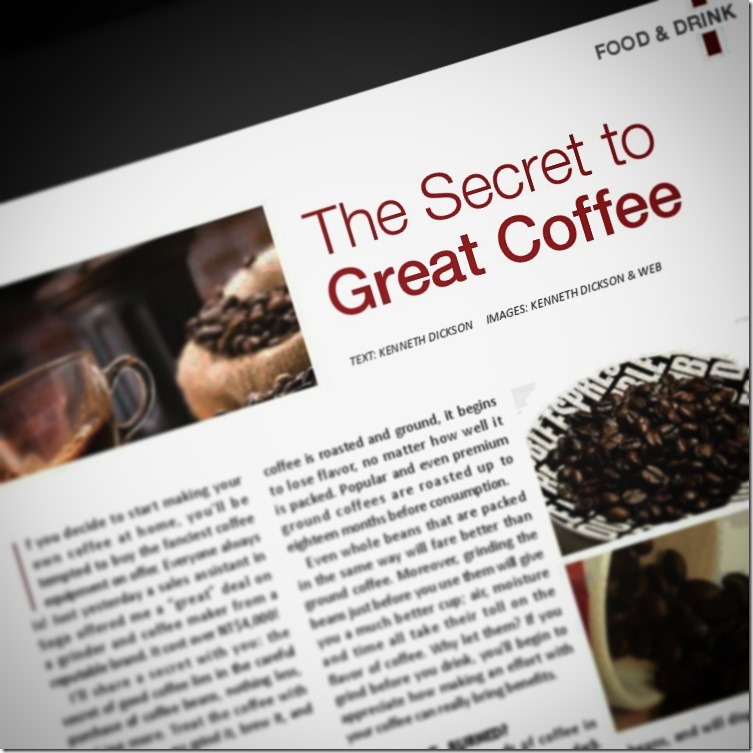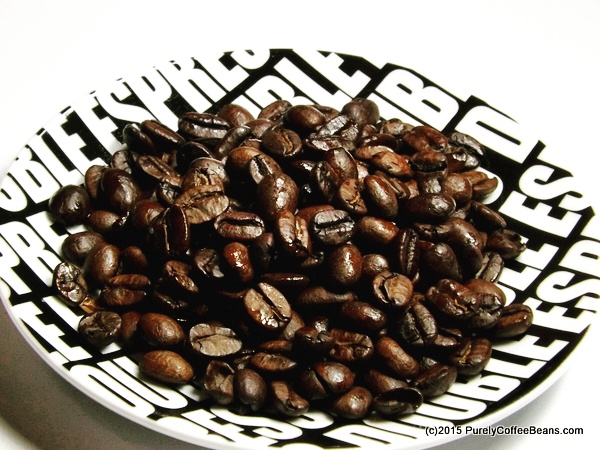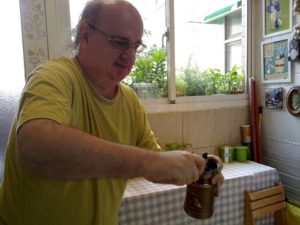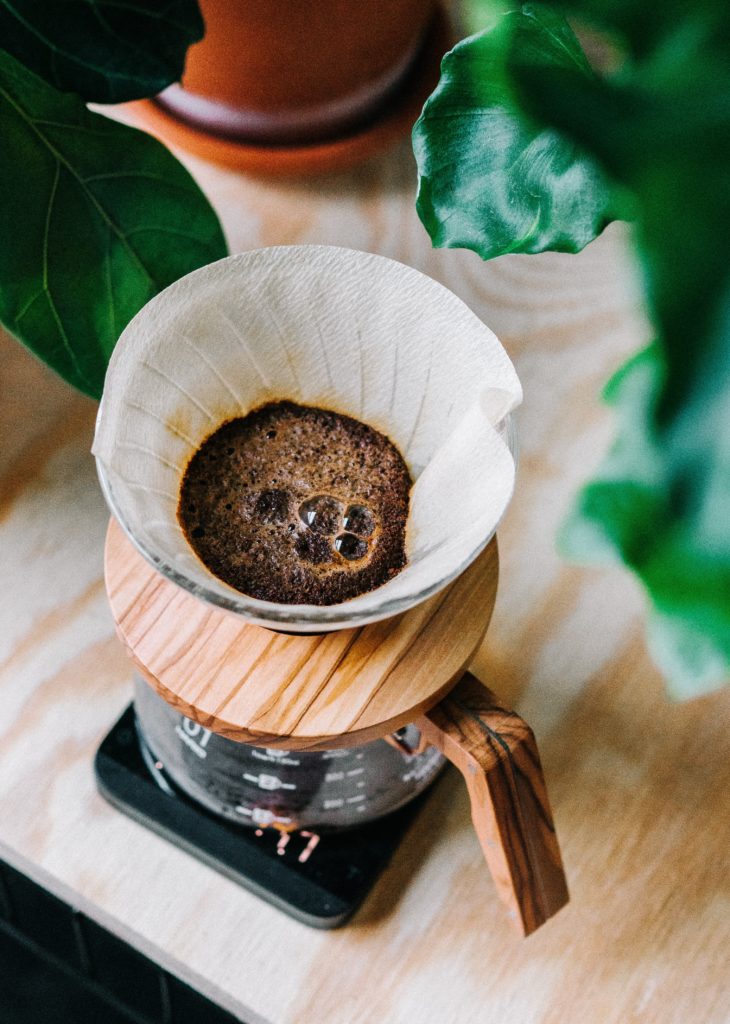The Secrets to Great Coffee
by Kenneth Dickson
PurelyCoffeeBeans wonders if you decide to start making your own coffee at home, you’ll be tempted to buy the fanciest coffee equipment on offer. Everyone always is! Just yesterday a sales assistant in Sogo offered me a ‘great deal’ on a grinder and coffee maker from a reputable brand. Over NT$4000!

Learn the Secrets to Great Coffee Article
I’ll share my secrets to great coffee with you: the secret of good coffee lies in the careful purchase of coffee beans, nothing less, nothing more. Then treat the coffee with respect when you grind it, brew it, and drink it. That’s all!
Disclaimer: When you buy through a link on this site, I earn commission
from any qualifying purchases as I’m an Amazon Associate.
What will I learn…? The Secrets to Great Coffee
- Part 1: Quality Chosen
- Part 2: Gently Ground
- Part 3: Simply Made
#1 Quality Chosen- PurelyCoffeeBeans’ secrets to great coffee

Secrets to Great Coffee: Secret #1 the coffee
It’s all about the coffee. That’s the first of the secrets to great coffee! It always has been. So when you’re thinking about your coffee in the morning, keep to these principles and you won’t go far wrong.
Avoid buying pre-ground coffee, esp. in the supermarket. Coffee that was roasted months before with a date that isn’t clear to the buyer? You can determine the approximate roasting date, by checking the “sell-by-date” and the shelf-life. Shocked, aren’t you? Worse news is that as soon as the coffee is roasted and ground, the coffee begins to lose flavor no matter how well it is packed. Popular and even premium ground coffees are roasted up to 18 months before consumption.
Even whole beans that are packed in the same way will fare better than ground coffee. Moreover, grinding the beans just before you use them will give you a much better cup; air, moisture and time all take their toll on the flavors of coffee. Why let them? If you grind before you drink, you’ll begin to appreciate how making an effort with your coffee can really bring benefits.
Roasted vs. burned?
Many popular brands of coffee in the supermarket also roast quite dark. Dark roasted coffee beans tend to taste similar because the longer roasting time blurs the original flavor profile of the beans and will disguise the unique qualities of the beans.
This is a deliberate decision by the purveyors of coffee to brand their coffee with their own flavor profile. It’s also an effective way to make the most of cheap coffee beans. So put that 3lb. can of “Arabica Blend Dark Roast Ground Coffee” back on the shelf now, please!
Regional vs. blend
Blending of coffee beans is a typical strategy of large coffee companies, because they can create coffee brands with their own unique characteristics. Blending also helps to balance one set of characteristics against another.
So, for example, you can add a fruity or citrus note by including Ethiopian Yirgacheffe coffee in your blend. Or you can add a bitter note, by including a little Robusta coffee, just like espresso roasters do in Italy. Most commercial coffees are made by mixing beans that have been professionally roasted, blended and marketed by the big coffee companies, like Starbucks Verona Roast, MJB or Douwe Egberts.
But once you begin to explore the finer beans, you’ll notice that those characteristics can produce really good coffee. Whether you’re looking at regional varietals, like Panamian Geisha, Hueheutenango from Guatemala’s Highlands, or Tarrazu from Costa Rica.
Fresh vs. Roasted
But the biggest difference is the most obvious: no matter how much you pay for the coffee beans, the delay between roasting and consumption will have a significant impact on the resulting coffee. So before you buy your next batch of coffee, check the roasting date.
It’s fine to leave the coffee for a few days after roasting for the fuller flavor profile to emerge. Purchasing coffee that’s been roasted within a month is the ideal, but you will not be able to find such coffee in a supermarket, especially for imported roasted coffee beans.
Look for local vendors who roast their coffee regularly or daily. You’ll get the best coffee at great prices from a local vendor. In Taipei, there are an increasing number of small scale, artisan roasters, as well as coffee chain stores, too.
Louisa Coffee sells regional varieties like Kenya A++, Guatemala, Colombia, Yirgacheffe, all of which are roasted within a few weeks. Cama Cafe also roasts their coffee right in the store, with similar varietals and a few local favorites. Moreway has a broader range of coffee, including Brazilian Ipanema, Malawi AA + Pamwamba, etc. Up in the city, you’ll find good coffee at Fong Da Coffee, Fika Fika Coffee, and at Wilbeck’s branches throughout the city.
#2 Gently Grinding – PurelyCoffeeBeans’ Secrets to Great Coffee
Grind at the time
Most coffee shops sell small bags, between 200g and 250g. So asking the retailer to grind your coffee is a smart move, if you don’t have a machine at home to do it for you. It won’t make much of a difference if you use the coffee quickly.

Secrets to Great Coffee: Secret #2the grind
But nothing says fresh coffee more than when it’s made just after grinding. So buying a grinder is essential if you really want to make the most of your coffee. Of course, you’ll also need to learn how to grind coffee and maintain your grinder, but it’s worth it.
No, not the blades
Let’s get it out of the way: the only kind of grinder you shouldn’t buy is a blade coffee grinder. They’re electrically powered grinders that mash your gentle, fragrant coffee to smithereens. For many people, it’s the grinder of first choice because it’s available everywhere and at a cheap price. For me, it’s best kept for grinding spices.
But the real issue is that the beans aren’t ground properly: some kernels remain quite large, others get ground to a superfine level. To even out the grinding, many users tend to grind for a longer time, which impairs the flavor because of the heat generated by the high speed of the blades.
Burrs, burrs, burrs
Focus on a ceramic burr grinder of some vintage or manual coffee grinder: they’re available in hand-powered models, which you manually grind the beans in the grinder by rotating an external handle. It’s a novelty for a while, but not the best solution for those in a hurry to get to work in the morning. Oh, and don’t let water into the grinding unit or you risk rusting the mechanism.
There are many models in the market place now, including some portable units, so you can make fresh coffee anywhere. The Hario Coffee Hand Grinder Skerton won’t go wrong with its variable settings for grinding coffee from coarse to espresso grade. It retails from about NT$1000+. You’ll also find other models from competitors at good prices, too.
Electric, of course
The electric burr grinder is probably the best model for most people. Set and forget operations mean that you can use it daily without hours of tweaking. Truth be told, there is no upper limit on how much you can spend on a coffee grinder.
- Some of the Baratza coffee grinders retail from about NT$7000 upwards, though you can find good deals.
- The Flying Horse Brand (飛馬牌) which is well-recognized here starts from about NT$3000 to NT$18000. One of their models has been sold in Costco for a while now.
- The Capresso Infinity Grinder is a good choice, comes with hard-wearing steel burrs, and looks good in any kitchen. It retails from about NT$4000.
Most of the coffee grinders mentioned here won’t be found in the coffee roasters, so you might need a little help from a Chinese-speaking friend to track them down from a better department store or online store.
For those exploring grinding options, it’s worth remembering that it’s the coffee beans that make the coffee. So it’s not necessary to spend a lot of dollars at the outset. Just focus on the best beans and a good quality grinder. That’s it.
#3 Simply Made – PurelyCoffeeBeans’ secrets to great coffee

Secrets to Great Coffee: Secret #3 the brew
Coffee Cones
My first coffee maker was the simplest of all, a plastic drip filter or cone. The cones are very affordable. For little more than $350, purchase a cone, and some papers. Then make some great coffee by buying a quarter pound of coffee from your local coffee roasters.
The cone is quick to use, easy to wash, and makes a variety of coffee. There are two kinds of cones available in the market right now: the traditional cone with the flat base (the cheapest), and the modern V60 cone which has a circular hole. The traditional cone comes in 2 sizes for one or two people. It is also found in a variety of materials. The V60 is more expensive and requires its own papers.
Just remember: use a tablespoon or coffee spoon to measure your coffee! Try to keep the water about 85C or 90C, otherwise you risk cooking the grounds, and having a tasteless cup of coffee! Also, watch the grind level, too coarse it will come out like water; too fine, you’ll end up with grounds in your cup. Aim for a medium-fine grind.
French Press
The French Press is the most glamorous of the methods to make coffee, especially if you buy one of the gold-plated glass beaker versions. Yet it’s one of the simplest ways to make coffee.
Grind your coffee to a medium coarse grind. Measure into the bottom of the glass pot. Add hot (NOT boiling) water into the beaker. Let soak for about 45~60 seconds, then add the remaining water. Add the pushing handle gently to the top of the beaker. Insert until you reach the top of the hot water.
Then steep at least 3 minutes. You can use a timer if you need to. The coffee won’t get too cold during that time. Don’t worry about that. Finally, gently but firmly press the plunger right down to the bottom. Serve into the cups and enjoy!
Just remember: it’s glass filled with hot water. So don’t drop the jug, don’t chip the jug, don’t put metal objects inside it, and don’t knock it. The last thing you want is a jug of hot coffee breaking all over the place. When finished, rinse gently and leave to drip dry. If you have a dishwasher, make sure that the french press can be washed safely in it.
The french press, v60 cone, traditional cone, spoons, timers, and thermometers are available at most good coffee shops. Now, promise me you won’t share my coffee secrets with anyone! Of course, you won’t… but people will be asking how you make your coffee taste so good. It’s going to be hard not to.
Profile
Kenneth Dickson started drinking cappuccino at Luvian’s Coffee Shop thirty years ago, and hasn’t stopped drinking, making and writing about coffee ever since. Taipei is his coffee heaven. Now he writes at PurelyCoffeeBeans. com about his love of coffee.
References
My latest coffee article has been published. If you’d like to find out the secrets to coffee great, check out the article on pg. 27 of the Community Center’s Centered Magazine. Enjoy! But don’t forget to make some great coffee!
For more information and recipes on to our How To Make Coffee Page
![]()